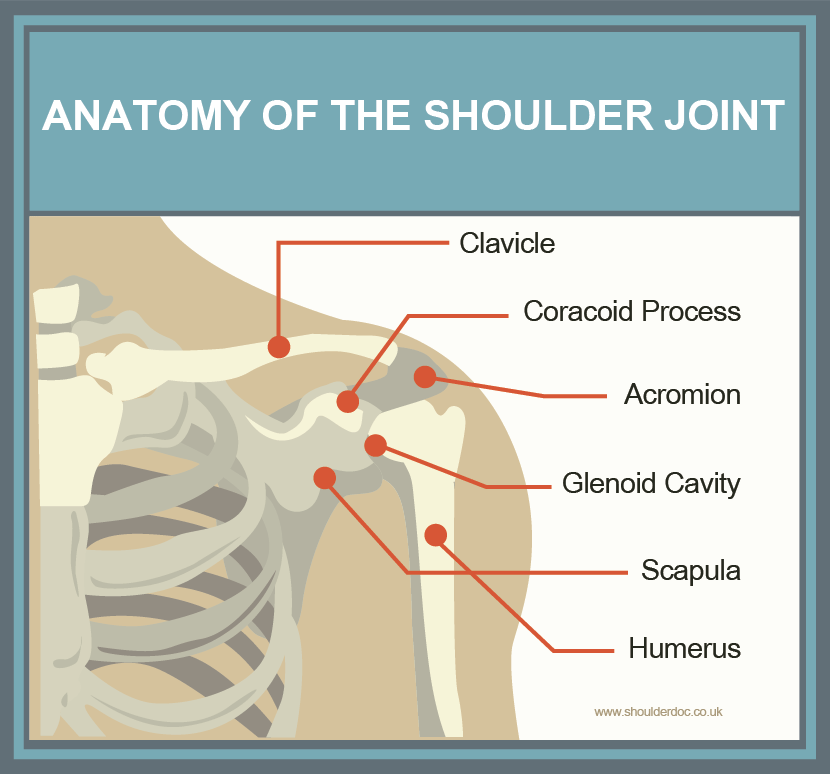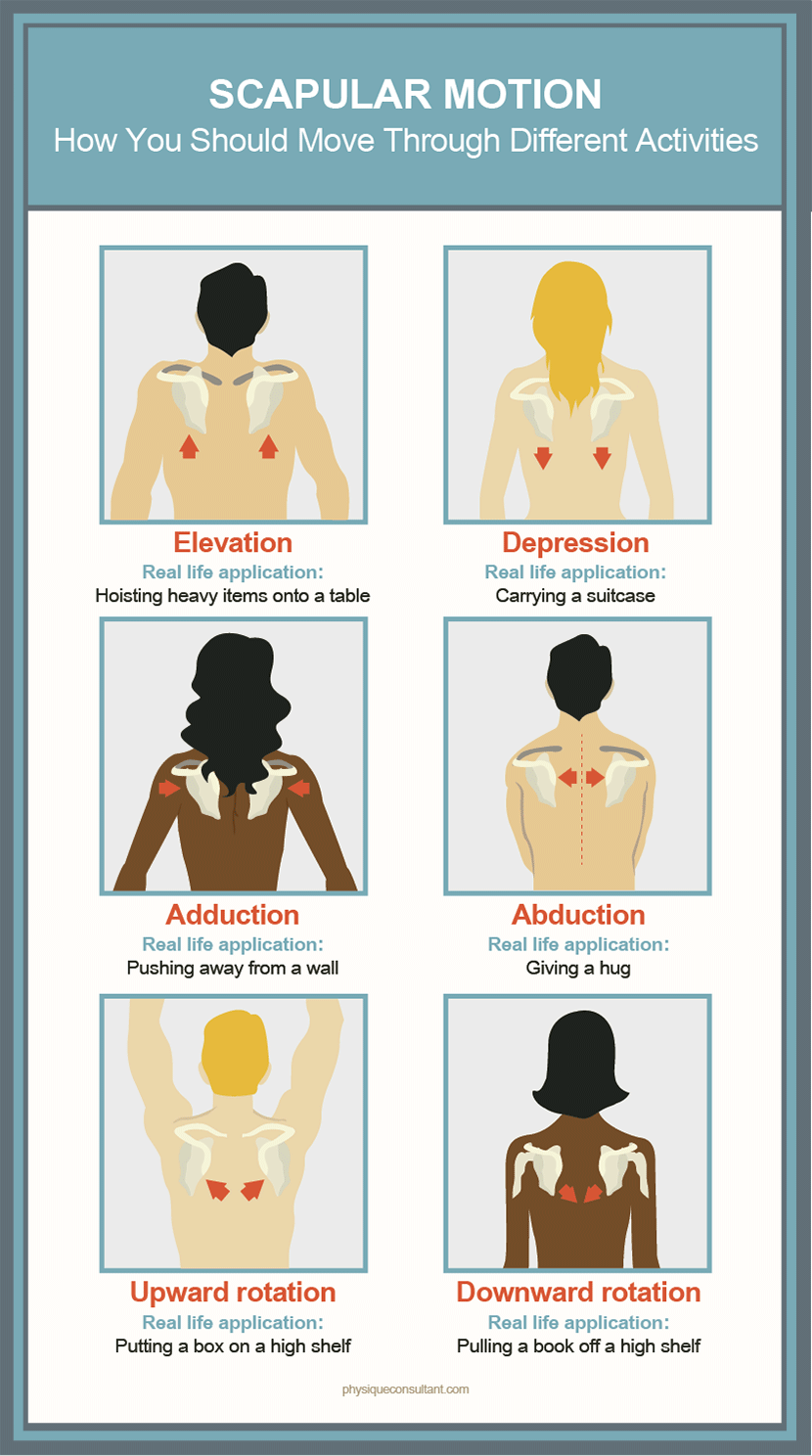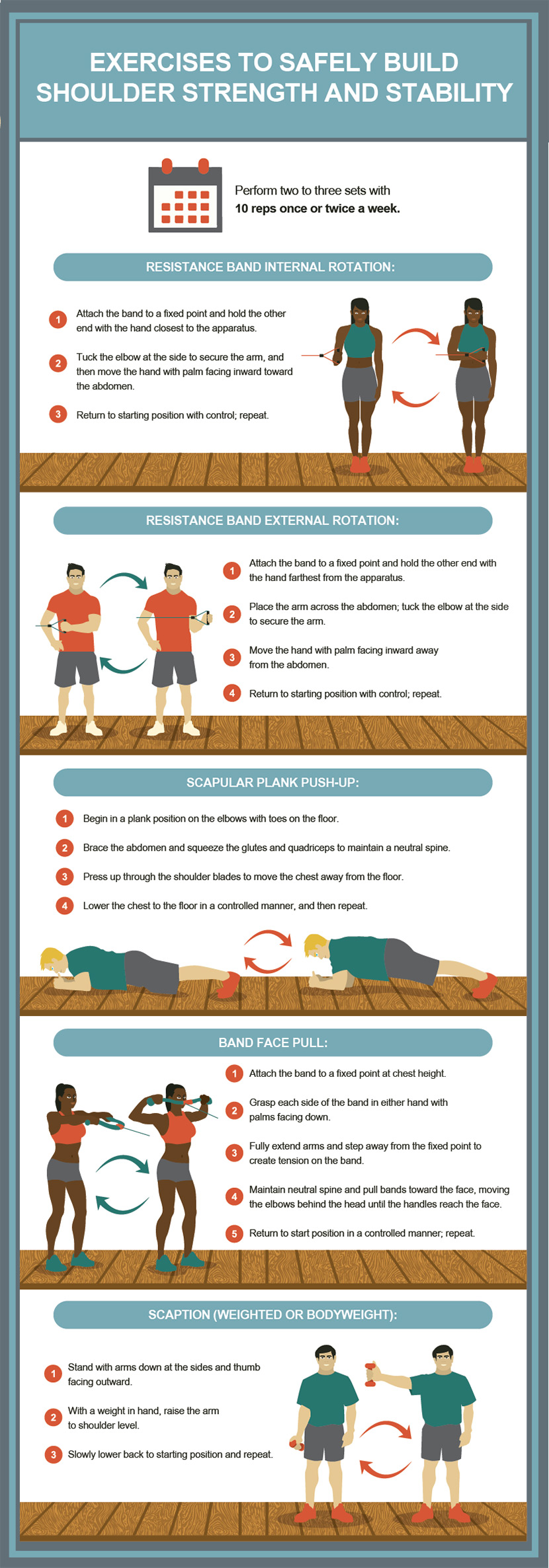Save Your Shoulders
How To Keep Your Shoulders Strong and Healthy
Your shoulders aren’t just muscles; instead, they’re part of a complex area of the body comprising multiple bones, tendons, ligaments, and muscles that allow you to move your arms and position your hands anywhere you need them to be. Being proactive with shoulder health by including strength, mobility, and posture training in your exercise routine will keep you primed for movements big and small and help prevent pain and injury.
Humans are great at manipulating the environment to use their shoulders as little as possible. However, many of us neglect to take our shoulders through their full range of motion, and the less we use our shoulders, the more issues we may face. For example, it’s easy to reach the top of our heads to put on a hat, but we may avoid reaching for something high overhead, using a stepladder instead.
It’s never too late to work on shoulder health. Let’s take a look at why our shoulders are so unique, what causes common issues, and how to improve shoulder health to prevent future pain, strain, and injury.
Why are the Shoulders Unique?
Our shoulders are complex joints that rely on muscles to hold everything together, while the bones and ligaments give our arms freedom to move in all directions. Your shoulder allows you to reach overhead, to the side, across the body, behind the back, and everywhere in between. This type of movement requires numerous muscles to work together in specific patterns, with the shoulder using the three bones and four joints that make up the shoulder complex.http://emedicine.medscape.com/article/1899211-overview
When compared to joints such as the knee or the elbow – which can only flex and extend – the shoulder requires more free movement, which makes it a less stable joint. A complex arrangement of ligaments, tendons, and muscle keep the bones in place and create a delicate balance of free movement, allowing the joint to flex, extend, abduct, adduct, internally rotate, and externally rotate.
The Deepest Layer
The first layer of the shoulder consists of three bones: the humerus (upper arm bone), the scapula (shoulder blade), and the clavicle (collar bone). The clavicle is the bony attachment between the trunk and the upper limbs. The clavicle attaches to the sternum or chest bone on one end and the acromion or scapular on the other end.
This articulation forms the top of the shoulder. The scapula begins here and forms the back of the shoulder girdle, which glides along the first seven ribs to extend the arm. The top end of the humerus, known as the humeral head, fits into the shallow glenoid cavity of the scapula.

Ligaments, Tendons, and Muscles
Ligaments are soft tissue structures that connect bones to other bones. The shoulder ligaments hold the three shoulder bones together and keep them stable. Tendons are tough cord-like tissue that hold the muscles in the shoulder to the bone. The first layer of muscle in the shoulder is the superficial muscle (extrinsic), which includes the pectoralis major, trapezius, deltoid, and latissimus dorsi. The second layer is the deep muscle (intrinsic), which includes the pectoralis minor, subclavius, levator scapulae, rhomboids, seratus anterior, subscapularis, and teres major.https://www.shoulderdoc.co.uk/section/902
Here’s what all that anatomical terminology boils down to: the muscle within the shoulder complex supports the ligaments and tendons so they can hold the bone in place. Without adequate muscle strength and tone, the support structure experiences wear and tear. Additionally, if the muscles are not used correctly to move the bone when taking the shoulder through a full range of motion, damage may occur to the soft tissue. It’s important to build strong, healthy muscle tissue within the shoulder and to learn to move the shoulder properly to support the bone and other soft tissue.
Common Shoulder Problems and Causes
Due to our shoulders’ wide range of motion, they are more prone to pains, strains, stiffness, and injury. Moving correctly is the key to keeping the shoulders healthy. When movement is compromised, we may experience limited range of motion, tender spots, and other ailments.
Common pain complaints typically occur in the shoulder blade (scapular), middle trapezius, and rhomboid muscles. Long hours seated at a desk, spending a lot of time during the day with arms internally rotated to talk or type on the phone, and poor posture can result in muscles being overworked into bad positions, especially the deep pectoral muscles.https://breakingmuscle.com/mobility-recovery/the-thing-you-do-everyday-that-s-setting-you-up-for-shoulder-injuries Sitting hunched over a computer or tablet all day can shorten the deep chest muscles and over-stretch the deep upper back muscles, causing instability and imbalance. Acute pain may also occur in the shoulders during heavy lifting, intense exercise, new activities, or trauma, such as fractures or dislocation.http://orthoinfo.aaos.org/topic.cfm?topic=a00065 Trying a new exercise or playing a sport for the first time can cause pain resulting from improper muscle use or poor stability.
Pain in the shoulder – whether chronic or acute – can be triggered by tendon inflammation (bursitis or tendinitis), instability, arthritis, tendon tears, impingement, or bone fractures.http://www.mckinley.illinois.edu/handouts/shoulder_reconditioning/shoulder_reconditioning.htm

Movements That Compromise the Shoulder
When shoulder pain or limited mobility occurs, it’s best to allow the shoulder to rest and heal until the pain subsides enough to take the shoulder through a good range of motion. Pain or stiffness during exercise or daily activity often stems from improper movement, such as using the biceps or upper arm muscles as the prime movers in a row exercise rather than taking the scapula through a full range of motion. This improper use of the scapula can create an inability to press or lift overhead.
It’s important to use the muscles in the shoulder and upper back to move the surrounding bone. When you press overhead, the scapula should glide up and down with the weight. When you row a barbell or cable, the scapula should glide toward the spine and back out again. When the scapula moves properly, it helps maintain a good position for the humeral head in the rotator cuff (in other words, the ball stays in the socket).
As noted above, poor posture can compromise proper movement during exercise. Slouching causes the scapula to move away from the ribs, which puts it in a suboptimal position when pressing, pulling, throwing, or swinging the arms. Standing correctly allows you to pull the scapula down and into the ribs.

Conclusion
Practicing good posture along with these suggested strength and mobility exercises will improve the long-term health of your shoulders. Take time every day to check your posture, especially during work hours or downtime when you are relaxing on the couch. Small changes to your daily habits go a long way when it comes to decreasing pain and increasing movement within the shoulder complex.
Embed the article on your site

